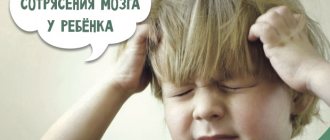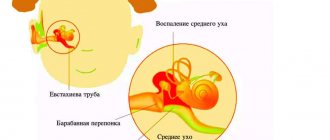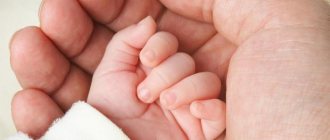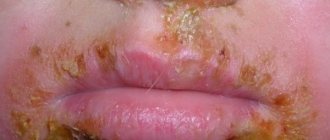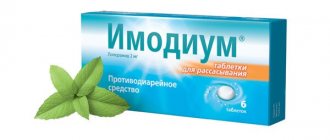Types of fractures
First of all, two types of fractures are distinguished; initially, the doctor pays attention to this:
- open - there is a violation of the integrity of the skin by parts of the broken bone, possibly the presence of a small wound, destruction of soft tissues with penetration of dirt may be observed, bleeding, both small and intense, is possible;
- closed - there is a bone fracture, which can be diagnosed using an x-ray, the skin remains intact.
The following types of fractures are also distinguished:
- compressive - one bone exerts strong pressure on another, particularly under load;
- a fracture with displacement of the arm in a child - bones move, a large area of damage occurs, nerve endings and large vessels may be affected;
- double - a fracture of the arm in two places at once, for example, the ulna and also the radius bone are broken at the same time.
Features in children
Visually, a child’s fracture has the appearance of a “green branch”. As a rule, in children there is a one-sided fracture, displacement is possible. In children, it is often accompanied by separation of the ligaments from the base of the bone.
The special specificity of children is based on the characteristics of the musculoskeletal system:
- the outer shell (periosteum) is much better supplied with blood and is denser than that of an adult;
- the bones still have growth zones;
- the presence of a large number of organic substances in the bone tissues of toddlers;
- callus forms much faster.
You need to know that in children it takes less time for fractures to heal than in adults.
However, the possibility of consequences should be taken into account:
- slowing down, then completely stopping bone growth ahead of schedule;
- shortening of a previously fractured limb;
- formation of curvatures.
You should know that children can experience spontaneous fractures, even from minor blows. Their development is caused by a deficiency of calcium in the body, a congenital disorder of mineral metabolism or acquired, which leads to the development of osteoporosis, as a result of which increased bone fragility.
Basic information about a broken arm in a child
An arm fracture is one of the most common fractures among all bones in the human body. A serious fracture is quite easy to detect. But there are also those in which the function of the hand is not significantly impaired, so a slight fracture can be mistaken for a severe bruise. What are the characteristic signs of a broken arm?
First, let's define a fracture. A fracture is usually called a pathological condition in which the integrity of the bone joint is disrupted or the bone comes out of the joint altogether. In such conditions, concomitant disturbances of natural processes occur - swelling, hyperemia occurs, soft tissue rupture occurs and pain occurs.
Among the main factors that can provoke a fracture of the arm are:
- blows of varying strength and direction;
- falls;
- awkward movements;
- chronic diseases;
- intentional infliction of injury.
Children have a more active lifestyle and therefore injuries at an early age are quite common.
In most cases, the specificity of arm fractures in children is due to certain factors that are associated with the structural features of the musculoskeletal system of the body.
The periosteum is a membrane that covers the outside of the bone; in childhood it is thicker and much better supplied with blood, and the bones contain a large amount of organic substances (zones of bone tissue growth). That is why most often fractures of the limbs in children are of the “green branch” type; such a fracture resembles a broken branch - a broken and bent bone.
A distinctive feature of this type of injury is the predominance of a unilateral fracture with little or no displacement, this is due to the fact that the thick periosteum has the ability to hold bone fragments.
But despite this, it should be noted that a fracture of the arm in childhood can lead to serious consequences in the future, this is due to the fact that the bone growth zone, which is located in close proximity to the joints, can possibly be damaged. . Therefore, injuries near these zones can cause their premature closure, as a result of which a curvature is formed and the bone is shortened as the child grows. Unlike fractures of the arm in the adult half of the population, in children quite often there is damage to the outgrowths to which the muscles are attached, in such cases, and a fracture of the arm is combined with the separation of ligaments and muscles from the base of the bone. But at the same time, the bone tissue of a child’s body grows together much faster than in adults, this is due to the increased blood supply to the periosteum, due to which the process of callus formation is faster.
Trauma at school or kindergarten
If a child breaks his arm while in a government institution, parents should follow these steps:
- first of all, you need to examine the baby, clarify what first aid measures were provided to him;
- Next, you need to request an incident report, which should include the following points: the time when the fracture occurred; what contributed to this incident; whose fault this happened; Full name of the educator or teacher in whose lesson the incident occurred;
- Visit to the emergency room; after professional assistance provided to the child, do not forget to ask for the appropriate certificate;
- contact the administration of the school or kindergarten to resolve the situation.
Sick leave and insurance
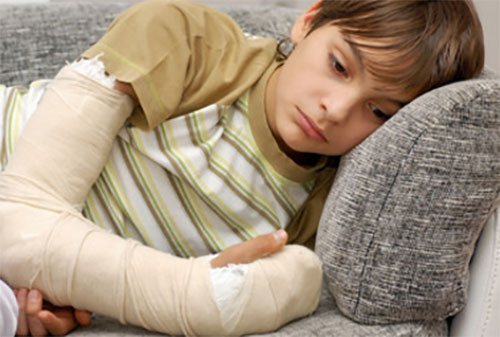
Many parents wonder whether they provide insurance for this type of injury? The answer here is ambiguous. In fact, if you have taken care in advance of purchasing an accident insurance policy for your baby, then it will be present. However, here it is necessary to take into account that a certain amount will be paid, which does not always cover all expenses for the treatment and recovery period. This is due to the fact that children have a high percentage of injuries and insurers know this very well; they will not work to their detriment.
Regular health insurance may not provide such services free of charge.
The second question that most often worries parents in such a situation: will they give their mother sick leave? Here, too, not everything is so simple. In fact, you receive paid sick leave if a child under the age of 15 requires outpatient or inpatient treatment with the mandatory presence of a relative, that is, the baby needs careful care. And there are still some points:
- if the child is under seven years old, sick leave is given until complete recovery;
- from seven to fifteen years – up to 15 days;
- over fifteen years – three days (only in case of outpatient treatment).
It turns out that if you receive a closed fracture without displacement, you may not receive sick leave, or you may receive it for three days. But with an open one or such, when surgery was required - for a long period, and if the child is less than seven years old - until complete recovery. In fact, everything is determined by each specific case. And the duration of sick leave can be increased by the decision of the medical commission.
Causes
A child in the kindergarten broke his arm while playing on the playground; the injury occurred at home. What factors provoke this phenomenon:
- the baby fell on his hand from a height, for example, jumping from a slide;
- during sports exercises under heavy load;
- due to the fall of a heavy object on the toddler’s hand;
- The baby has osteoporosis, the bones are too brittle.
You should also not forget about fractures received as a result of a traffic accident.
Main features
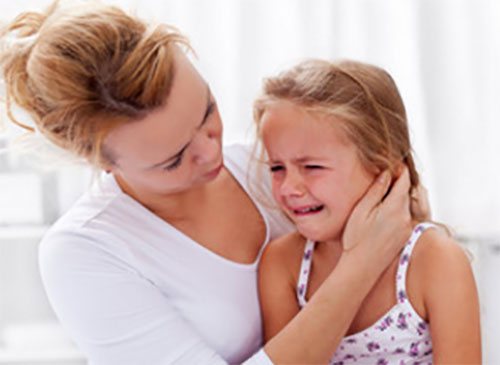
If a child has a broken arm, symptoms may manifest as follows:
- strong and sharp pain at the site of suspected injury;
- puffiness and swelling;
- the presence of a special crunch resulting from the friction of two parts from a broken bone;
- limb deformation is possible.
These are the main signs; there may also be additional ones:
- inability to move the joint;
- the intensity of pain increases if you change the position of the hand;
- the appearance of cold sticky sweat;
- the occurrence of hematomas at the site of injury;
- the skin turns pale and you may feel dizzy;
- breathing and heart rate increases;
- if there is an open fracture, there is bleeding of varying intensity depending on the degree of damage.
If there are even minimal signs of a fracture, you should immediately contact a traumatologist. To make a correct diagnosis, you cannot do without an x-ray.
Treatment of fractures in children
Recognizing a fracture in children is not particularly difficult. After an injury, severe pain is felt. The area begins to swell and a bruise forms. The limb is deformed.
You can confirm it by going to the clinic and using hardware diagnostics.
It is necessary to immediately call an ambulance in the following cases:
- loss of consciousness;
- increased body temperature;
- vomit;
- suspicious behavior;
- impaired coordination of movements.
It is important not to delay in seeing a doctor.
Since lost time can cause the development of various complications. For a common fracture, a conservative treatment method is used. Most often, a special fixing bandage is applied. A plaster splint is used for immobilization; it should cover ⅔ of the limb and fix two adjacent joints.
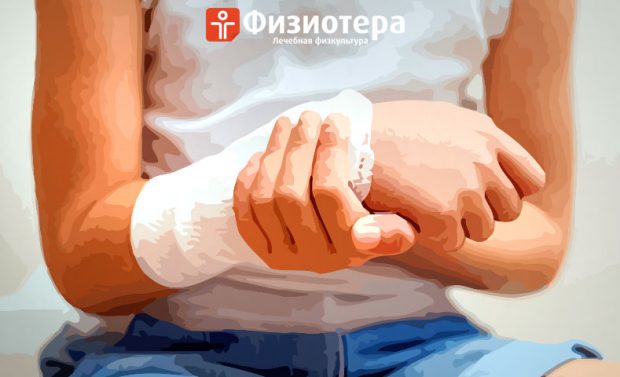
During treatment, an X-ray examination is indicated, which makes it possible to exclude repeated displacement of bone fragments.
Traction is used for fractures of the humerus, tibia, and femur. The type of traction depends on the age, location, and nature of the injury. It allows you to eliminate the displacement of fragments.
With such an injury to the upper extremities, the treatment and rehabilitation of the child after a broken arm is important.
If displacement occurs, closed reduction is performed as soon as possible after injury. An important step is pain relief. With good anesthesia, the doctor can perform a reduction with minimal damage to nearby tissue. In a hospital setting, anesthesia is used, usually local. To do this, a solution of novocaine is injected into the area of the hematoma.
Surgical treatment is performed in the following cases:
- with periarticular and intra-articular fractures with displacement;
- when performing reposition more than twice;
- open fracture with soft tissue damage;
- in case of improper fusion of the bone, which will lead to deformation;
- injuries that are pathological in nature.
Open type reduction is carried out with minimal trauma. Metal structures for proper fusion of joints are very rarely inserted into children.
Bone tissue fusion occurs faster in children than in adults.
If the fixation was short-lived, there was virtually no rehabilitation after a compression fracture in children, there was early stress on the joint, and the likelihood of re-injury was high.
In children, unfused bones and false joints are practically never found. If there is no necessary contact between fragments, this can lead to long-term nonunion of bone tissue.
Rehabilitation after a broken leg or arm in a child should be moderate and painless.
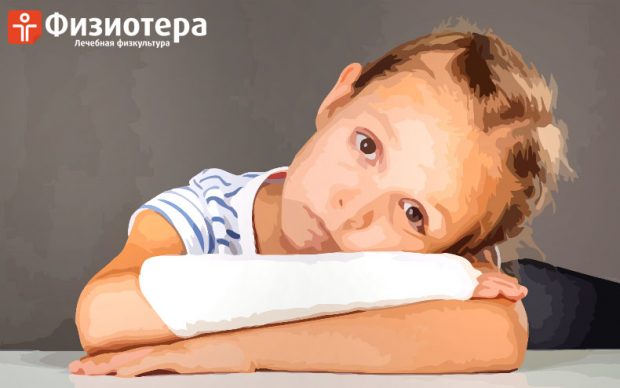
Diagnostics
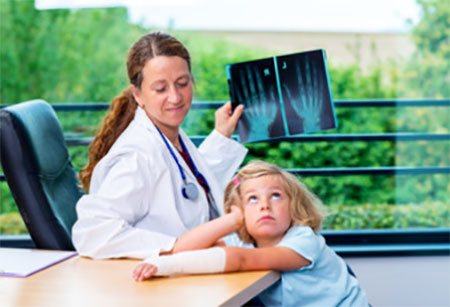
To determine the presence of a fracture, the following steps will be taken:
- examination of the patient, questioning of complaints, finding out the reasons for the incident;
- the presence of the following symptoms is established: hematomas, deformities, movement disorders, swelling and soreness, crepitus;
- the general condition of the child is assessed, special attention is paid to the head, abdomen, neck, chest, the presence of reflexes and the level of consciousness are assessed;
- Radiography is prescribed in two projections. This is necessary to determine the nature of the injuries, the formation of fragments, and reveals the exact location of the fracture.
If necessary, the following are also prescribed:
- MRI;
- ultrasound diagnostics;
- consultation of narrow specialists.
Diagnosis of childhood injuries
A fracture in a young child is accompanied by loud crying; children over 4–5 years old can describe the pain and show where it is located. It is important for parents not to panic and not to scare the baby.
A splint is applied to the injured limb, and the child is given an anesthetic drug: Ibuklin, Nurofen. A cold compress is applied to the damaged area as local anesthesia. A sick child should immediately consult a doctor.
If the fracture is open and the child is bleeding, then first of all it is necessary to stop the bleeding and disinfect the wound. To do this, a compressive bandage is applied higher up the limb; damaged large vessels can be pinched with your fingers. An ambulance is called.
You should not try to set protruding bone fragments on your own. The doctor will do this with sterile instruments in the operating room. The protruding bone is covered with sterile gauze or a napkin until the doctors arrive.
At the clinic, the child is sent for examinations:
- Visual examination by a pediatric traumatologist;
- X-ray image in two projections.
During a visual examination, the doctor will try to determine the presence of a fracture by palpation and will find out from the parents the mechanism of injury. An x-ray will help make a diagnosis and provide a clearer picture of the nature of the fracture line.
We provide first aid
In case of a fracture, medical intervention cannot be avoided. Never set a bone yourself. The first task of parents is to calm the baby, immobilize him and then call the doctors.
Let's look at general measures to provide first aid.
- Using available means, immobilize the injured limb. For this purpose, cardboard, plywood, a ski pole, or newspaper folded in several layers will suit you.
- Now you need to fix the hand, it is advisable to do this with bandages or pieces of fabric. Parents should take care of the immobility of the joints between which the fracture site is located. It is recommended to apply cold.
- If you have ever broken your arm, then you probably know how much pain is accompanied by this injury. The baby cannot endure it, and he doesn’t need to. Therefore, it is important to take care of taking analgesics. For children, you can use drugs based on paracetamol or ibuprofen. For example, Nurofen has proven itself well.
- If a child has an open fracture, then first of all it is necessary to treat the torn area of skin. For this purpose, it is necessary to use any available antiseptics, for example, hydrogen peroxide. After treatment, a sterile napkin is applied to the affected area, and only then the limb is fixed.
- If there is severe bleeding due to an open fracture, then it is necessary to apply a tourniquet above the site of injury to the skin and immediately call an ambulance.
- If you notice that the baby has a traumatic shock, bring a piece of cotton wool coated with ammonia (literally a couple of drops) to his nose (at a distance of seven cm). This will help bring him to his senses.
You can also read about first aid for broken legs and nose in a child.
Treatment
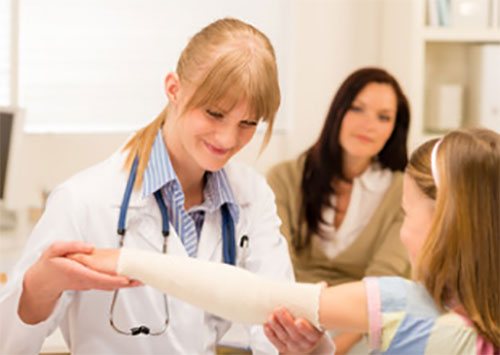
First of all, the doctor will numb the baby and put a cast on the fracture site, but only after taking an x-ray and confirming the alleged diagnosis.
In most cases, hospitalization for a broken arm is not necessary. However, there are situations when it is needed:
- severe blood loss;
- there is damage to tendons and nerve fibers;
- with an open fracture, an infection has entered the wound and continues to spread;
- during a fracture, the bone is crushed into several fragments that need to be removed surgically;
- bone injury is accompanied by a severe burn;
- the need for surgical intervention.
Parents should understand that treatment can be both surgical and conservative.
- Conservative treatment is prescribed for a closed fracture, in the presence of only two bone fragments, and is accompanied by:
- pain relief with analgesics, for example, novocaine;
- the use of drugs to relieve swelling;
- applying plaster;
- tying the arm with an immobilizing bandage;
- the doctor must take care of oxygen access to the hand and ensure that the functioning of the nerve tissues is not disrupted.
- Surgical intervention is necessary for:
- damage to nerves and large vessels;
- repeated displacement of fragments;
- open injuries;
- inability to correctly compare the fragments;
- instability of bone fragments.
It must be taken into account that surgery increases the risk of damage to the germ cells of bone growth zones.
The surgery takes place under general anesthesia. Anatomical alignment of bone fragments is carried out for epiphyseal and displaced articular fractures. Fixation is performed using a Kirschner wire, which is removed after complete fusion of the bone.
For any type of treatment, the following therapy is prescribed:
- taking analgesics;
- anti-inflammatory drugs;
- drugs that increase the intensity of bone fusion;
- medications with chondroitin and calcium;
- immunomodulators;
- vitamin therapy.
For children, plaster casts are used instead of circular plaster casts.
The plaster is removed after complete fusion of the bones. This may take a month, sometimes two. This will depend on the severity of the injury, type of fracture, age of the toddler, and individual characteristics.
The success of treatment depends on:
- correctly provided first aid;
- fracture location;
- combined injuries;
- baby's age;
- severity of injury;
- timely surgical intervention;
- going through a recovery period.
Types of radius fractures and their signs
Damage to the radial bone of the forearm can be intra-articular, violating the integrity and functionality of the wrist joint, and extra-articular, when the fracture line does not extend to the articular surface.
With a closed injury, there are no visible damage to the skin; with an open fracture, the integrity of the skin is compromised, which is often accompanied by complications such as rupture of blood lines and nerve trunks.
Fracture without displacement of bone fragments
Every second case of fracture of the radius occurs without displacement . This is due to the fact that the muscle groups on the forearm are poorly developed and do not have a mechanical effect on the bone at the time of its damage. An x-ray reveals a crack. An incomplete fracture can be localized both in the head and body.
In most cases, non-displaced injury is diagnosed in children and adolescents as a result of active games or sports. The symptomatic picture is blurred. There is no visible deformation of the limb, the swelling is not pronounced, the pain resembles a bruise.
Fracture with displacement of fragments
Displacement of bone fragments occurs under the influence of external force or internal force ─ the pressure of skeletal muscles on the beam. A characteristic sign is a clearly defined deformity of the upper limb.
The fault line is often transverse or oblique. The displacement occurs in the longitudinal or transverse plane; in 50% of cases, the bone simultaneously shifts horizontally and vertically.
In case of automobile or occupational injuries, impacted (compression) fractures are more often recorded. They are accompanied by massive damage to muscle tissue and deep layers of skin. The x-ray shows small fragments (bone fragments).
Typical radius injury
Fractures of the radius in a typical location are the most common forearm injury. When falling on the hand under the influence of body gravity, the radius bone cannot withstand and breaks in the area of the lower third, 3-5 cm above the wrist joint. Depending on the location of the palm during the fall (turned outward or inward), two types of injury are distinguished.
